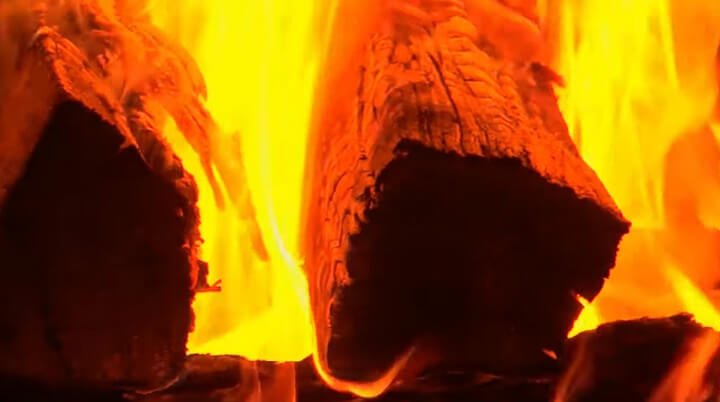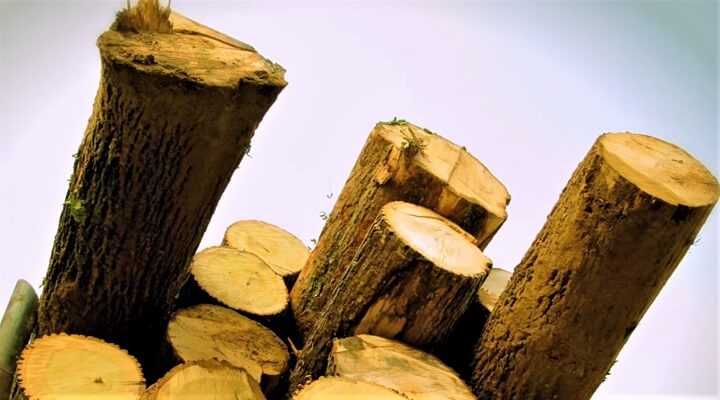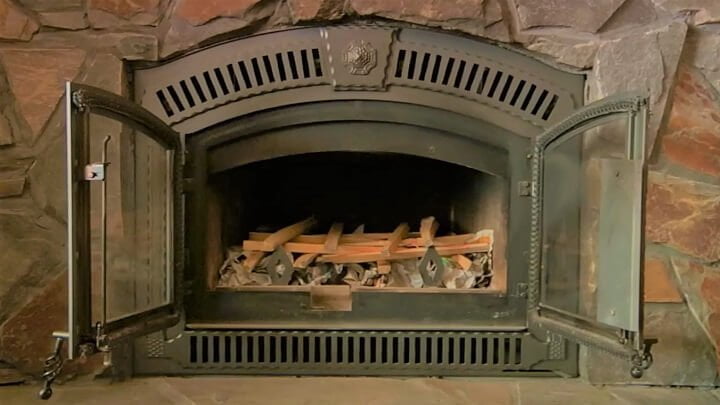Why Can’t I Start A Fire In My Fireplace (Wood Burning)?
Note: This article may contain affiliate links, which means if you make a purchase following our links won’t cost you extra, but we may earn a commission. Learn more
There’s something about a fireplace that just screams cozy. But when you can’t get your fire started, it’s anything but cozy. It’s frustrating, and can even be a little bit dangerous if you’re not careful.
So, what are some things you can do to make sure you can start a fire in your fireplace? First, make sure the flue is open. This is the most common reason why fires won’t start – the flue is closed, and the smoke has nowhere to go.
Next, check the wood. Make sure it’s dry, and that there’s no debris or insects in it. If it’s damp, that’s probably why your fire won’t start.
Also, make sure you have a good igniter. Matches can be finicky, so it’s always good to have a lighter or some other kind of igniter on hand.
With these tips in mind, you should be able to get your fire going in no time!

Why Can’t I Get a Fire Started in My Fireplace?
The Flue is Not Open
If your fireplace flue is not open, the draft necessary to bring fresh air into the fire chamber and up the chimney is not present. To check if your flue is open, stand in front of your fireplace and look up. If you see daylight, the flue is open. If not, it’s closed.
There’s Not Enough Ventilation
A fire needs three things to burn: fuel, heat, and oxygen. If there’s not enough oxygen present, the fire will smolder and produce a lot of smoke, but little flame. To ensure proper ventilation, open a window near the fireplace or crack open the door to the room.
The Fireplace Is Too Cold
A cold fireplace is a common reason why a fire won’t start or stay lit. The solution is simple: build a taller fire. By adding more logs to the fire, you increase the heat, which will help to ignite the logs lower in the pile.
The Logs Are Too Wet
Wet logs are another common reason for a fire that won’t stay lit. If the logs are fresh from the woods, they likely contain too much moisture and won’t burn well. The best solution is to let the logs sit in the sun for a few days or weeks to dry out. You can also buy kiln-dried firewood, which is guaranteed to be dry.
You’re Using the Wrong Kind of Wood
Different types of wood burn at different rates and produce different amounts of heat. Hardwoods, such as oak and maple, burn slowly and produce a lot of heat. Softwoods, such as pine and cedar, burn quickly and don’t produce as much heat. It’s best to use hardwoods to get a fire that burns well and produces enough heat.
The Chimney Is Blocked
A blocked chimney is a serious safety hazard and one of the most common reasons why a fire won’t start or stay lit. If your chimney is blocked, the smoke has nowhere to go and will quickly fill the room. To prevent a chimney fire, have your chimney cleaned and inspected annually by a certified chimney sweep.
You Didn’t Use Kindling
Kindling is small pieces of wood, such as twigs or split logs, that are used to start a fire. Without kindling, it’s very difficult to get a fire started. To build a proper fire, start with a layer of kindling, followed by a layer of small logs, and then a layer of larger logs.
The Damper Is Closed
The damper is a metal door that covers the opening of the fireplace. It’s important to keep the damper open when starting a fire, as it allows fresh air to enter the fire chamber. If the damper is closed, the fire will quickly smolder and produce a lot of smoke.
You Didn’t Use a Fire Starter
A fire starter is a material that is used to help ignite a fire. The most common fire starters are newspaper, wax paper, dryer lint, or kindling. To use a fire starter, simply place it under the logs and light it. The fire starter will help to get the fire going and make it easier to keep it lit.
There’s Not Enough Fuel
A fire needs fuel to burn, so if there’s not enough wood, the fire will go out. To keep a fire going, add more logs to the fire as needed. It’s best to have a few extra logs on hand so you can keep the fire burning all night.
Related: How Far Does A Hearth Have To Stick Out?
Why is the Wood Not Catching Fire?
When it comes to trying to get a fire going, one of the most important things you need is dry wood. If your wood is wet, then it’s not going to catch fire very easily. There are a few different reasons why your wood might be wet and not catching fire.

One reason could be that you’re using green wood, which is wood that hasn’t had a chance to cure or dry out yet. Greenwood has a higher moisture content than seasoned wood, so it’s harder to get it to catch fire. Another reason could be that you’re using damp kindling, which can make it difficult for your main piece of wood to catch fire as well.
If you’re having trouble getting your fire started, one thing you can try is using some newspaper as kindling. Newspaper ignites quickly and can help get your larger pieces of wood burning. You can also try using a little bit of petroleum jelly on the end of a matchstick – this will help the matchstick stay lit long enough to ignite the paper.
Once you’ve got the paper burning, add some small sticks of kindling on top, and then slowly build up your fire with larger pieces of wood.
How Do I Build a Fire in My Fireplace?
If you’re lucky enough to have a working fireplace in your home, congratulations! Not only does it add ambiance and coziness on cold winter nights, but it can also save you money on your heating bill. Here’s how to build a fire in your fireplace:
1. Start by cleaning out the ashes from the previous fire, using a shovel or vacuum cleaner designed for the job.
2. Next, gather your wood. If you’re using logs, make sure they are dry and seasoned; green or damp wood will smoke and smolder rather than burn brightly. You’ll need about two to three logs for a good fire.
3. Place some crumpled-up newspaper in the bottom of the fireplace, followed by some small kindling pieces of wood (think twigs or small sticks).
4. Arrange your logs on top of the kindling in a teepee shape, with the largest log in the middle and smaller ones on either side. Leave room between each log so that air can circulate and help them catch fire more easily.
5. Use a long match or lighter to ignite the newspaper at several points under the teepee of logs. Alternatively, you can use an electric starter specifically designed for this purpose (available at most hardware stores).
Be sure to stand back when igniting the fire!
Read More: How To Circulate Heat From A Fireplace: The Easy Way
How Do You Start a Fire With Wood That Won’t Light?
If you’re trying to start a fire with wood that won’t light, there are a few things you can do to try and get it going. First, make sure that the wood is dry – if it’s wet, it’s not going to light. Second, try using some kind of tinder – something that will catch the spark and help ignite the wood.
This could be anything from paper to dried leaves. Once you’ve got your tinder ready, create a tepee out of your smaller pieces of wood, making sure to leave a hole in the center for oxygen to flow. Then, use your larger pieces of wood to create a log cabin around the tepee.
Use your lighter or matches to ignite the tinder in the center of the structure. If all goes well, your fire should start burning!
Best and Easiest Way To Start Your Fireplace!
How to Start a Fire in a Fireplace Without Smoke?
If you have a fireplace in your home, you know that starting a fire can be tricky. If done incorrectly, you can end up with a smoky mess. Here are some tips on how to start a fire in your fireplace without all the smoke.
1. Start by opening the flue. This will allow the smoke to escape up the chimney instead of into your home.
2. Next, gather your wood and arrange it in the fireplace. The wood should be arranged in such a way that there is room for air to circulate around it. Otherwise, the fire will not get enough oxygen and will produce more smoke than necessary.
3. Once your wood is arranged, it’s time to light it! Use some crumpled-up newspaper or kindling to help get the fire going. Be sure to light the paper or kindling from underneath so that the flames have somewhere to go when they catch hold of the material.
4. Finally, once your fire is lit, close the doors or screens on your fireplace to help contain any stray sparks or embers. Doing this will also help prevent too much heat from escaping out of your fireplace and into your home (which could be dangerous).
Following these steps should help you start a fire in your fireplace without creating too much smoke inside of your home!

How to Start a Fire in a Fire Pit?
If you’re lucky enough to have a fire pit in your backyard, then you know how enjoyable it is to gather around with family and friends to roast marshmallows and enjoy the outdoors. But before you can get to that point, you need to learn how to start a fire in your fire pit. Here are some tips to help you get started:
1. The first thing you’ll need is some dry wood. If it’s damp or wet, it won’t burn as well. You can either let the wood sit out in the sun for a while before using it, or buy some kiln-dried wood from your local hardware store.
2. Once you have your dry wood, it’s time to build a tepee structure with it. This will help ensure that air can circulate around the wood and help the fire get going.
3. Next, add some tinder – small pieces of paper or kindling – into the center of the tepee structure.
4 . Now it’s time to light the tinder! Use a match or lighter and hold it close to the tinder until it starts to catch fire. Once it does, carefully feed more twigs and small logs into the flames until you have a nice roaring fire going.
5 . And that’s all there is to start a fire in your fire pit! Just make sure to keep an eye on things and keep adding more fuel as needed so that your fire doesn’t die out prematurely.
How to Start a Fire in a Fireplace With Firestarter?
If you’re like most people, you probably grew up starting fires in your fireplace with dry kindling and a match. But what if there’s no wood around, or your matches are wet? Here’s how to start a fire in a fireplace with a firestarter.
First, find a good spot for your fire. The best place is on the hearth, where the bricks are hottest. If there’s no hearth, any flat surface will do.
Next, gather your materials. You’ll need something to catch the sparks (newspaper works well), tinder (wood shavings or straw), and kindling (small sticks). If you have them, you can also use coal or charcoal.
Once you have everything ready, it’s time to start building your fire. Begin by crumpling up some newspaper and placing it in the center of your chosen spot. Then add some tinder on top of that, followed by the kindling.
If you’re using coal or charcoal, add those now as well.Now it’s time to light your fire! Use a long match or lighter to ignite the newspaper at several points.
Once the flames begin to catch hold, carefully blow on them until they’re burning brightly. Then sit back and enjoy the warmth!
Conclusion
If you’re having trouble getting a fire going in your fireplace, there are a few things you can check. Make sure the flue is open so that smoke can escape. If it’s too cold outside, the draft from your chimney might not be strong enough to pull the smoke up and out.
You can try lighting a piece of paper and holding it up near the opening of the fireplace to see if the draft is strong enough. If not, you can try using a fan to help get the air moving.
To see our latest posts Click Here